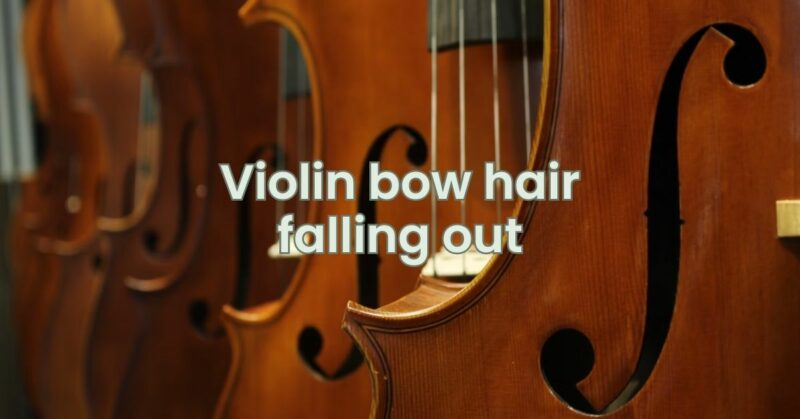The violin bow is an essential component of producing beautiful music, and its effectiveness relies on the delicate arrangement of horsehair across its length. However, it’s not uncommon for violinists to encounter a concerning situation: bow hair falling out. In this article, we’ll delve into the reasons behind violin bow hair falling out, the impact it has on performance, and the steps you can take to address and prevent this issue.
Why Does Violin Bow Hair Fall Out?
Bow hair falling out can be attributed to several factors, each of which contributes to the wear and tear experienced by the bow hair:
- Natural Wear and Tear: With frequent use, the friction between the bow hair and the violin strings causes gradual wear and tear. Over time, this can weaken the hair’s structure and lead to hair loss.
- Excessive Rosin Buildup: Rosin is applied to the bow hair to enhance its grip on the strings and produce sound. However, excessive or infrequent cleaning of the bow hair can lead to rosin buildup, making the hair brittle and more prone to breakage.
- Incorrect Technique: Applying excessive pressure or using improper bowing techniques can strain the bow hair and cause it to break or come loose from the bow.
- Quality of Bow Hair: The quality of the horsehair used in the bow affects its durability. Poor-quality hair is more likely to break and shed.
- Environmental Factors: Fluctuations in humidity and temperature can impact the condition of the bow hair, potentially making it more brittle and prone to falling out.
The Impact on Performance
Bow hair falling out can significantly impact a violinist’s performance. It affects the quality of sound produced, as the bow’s contact with the strings becomes less consistent. Additionally, the presence of loose hair can cause scratching or unwanted noise as the hair brushes against the strings. These issues can disrupt the musician’s ability to play smoothly and produce the desired tone.
Addressing and Preventing Bow Hair Fall-Out
- Regular Maintenance: Regularly clean the bow hair to prevent rosin buildup. Use a soft cloth or a bow hair cleaner to gently wipe away excess rosin after playing.
- Proper Rosining: Apply an appropriate amount of rosin to the bow hair. Avoid over-rosining, as excessive rosin can lead to buildup and brittleness.
- Proper Technique: Practice proper bowing technique to avoid putting excessive pressure on the hair. Use the weight of the arm to create sound rather than pressing down forcefully.
- Quality Bow Hair: Invest in a bow with high-quality horsehair. Well-maintained, durable hair is less likely to break and fall out.
- Climate Control: Store your violin and bow in an environment with stable humidity and temperature levels to prevent the hair from becoming overly dry or brittle.
- Consult a Luthier: If your bow hair is falling out frequently, consider consulting a luthier or bow expert. They can assess the condition of the bow and make any necessary repairs or adjustments.
Conclusion
Violin bow hair falling out is a common issue that arises due to the natural wear and tear of frequent playing and other contributing factors. While it’s an expected occurrence to some extent, proper maintenance, technique, and care can help minimize the extent of hair loss. By understanding the causes, effects, and prevention measures associated with bow hair fall-out, violinists can ensure that their instruments continue to produce beautiful music with minimal disruptions and achieve a harmonious balance between playability and durability.


